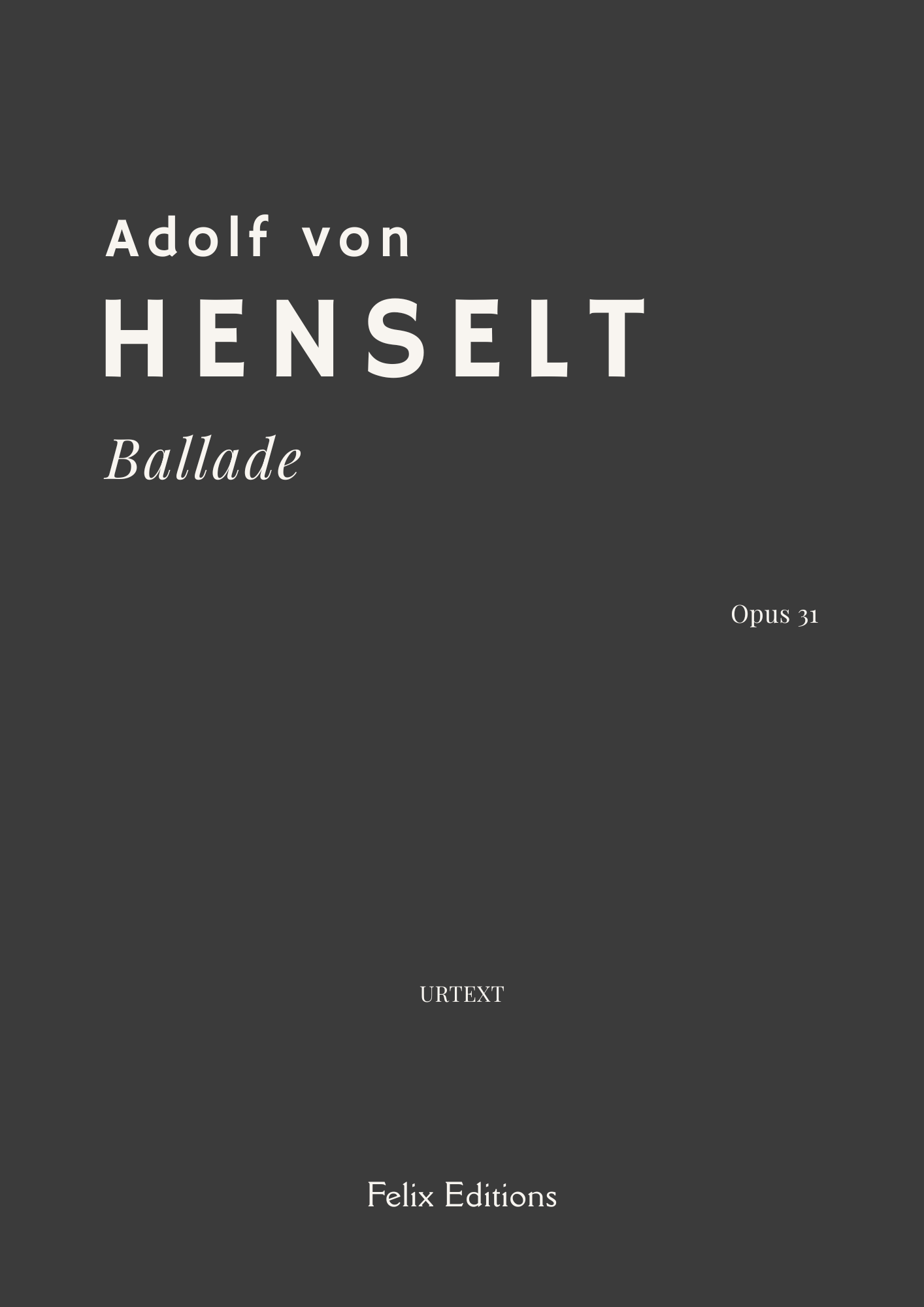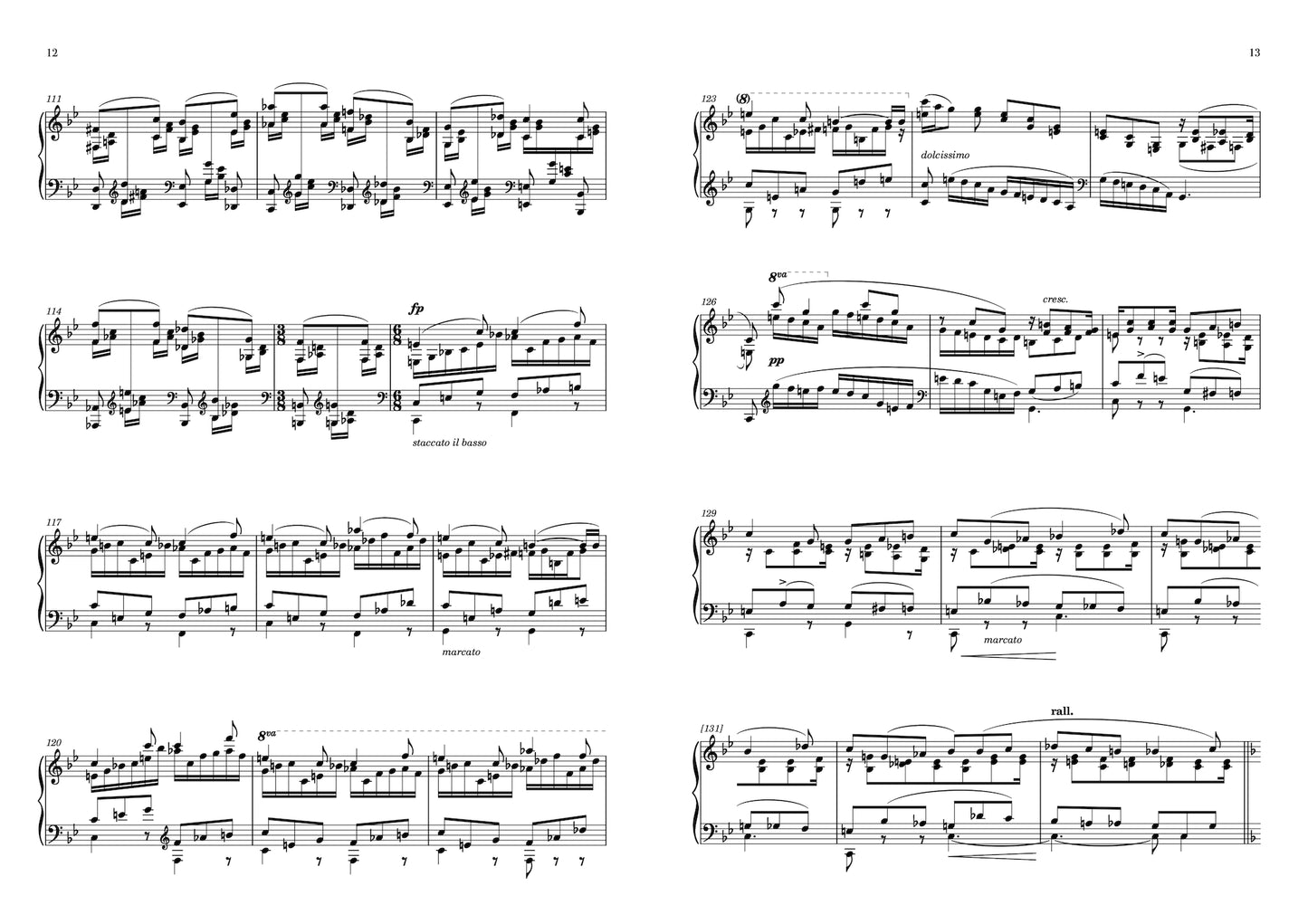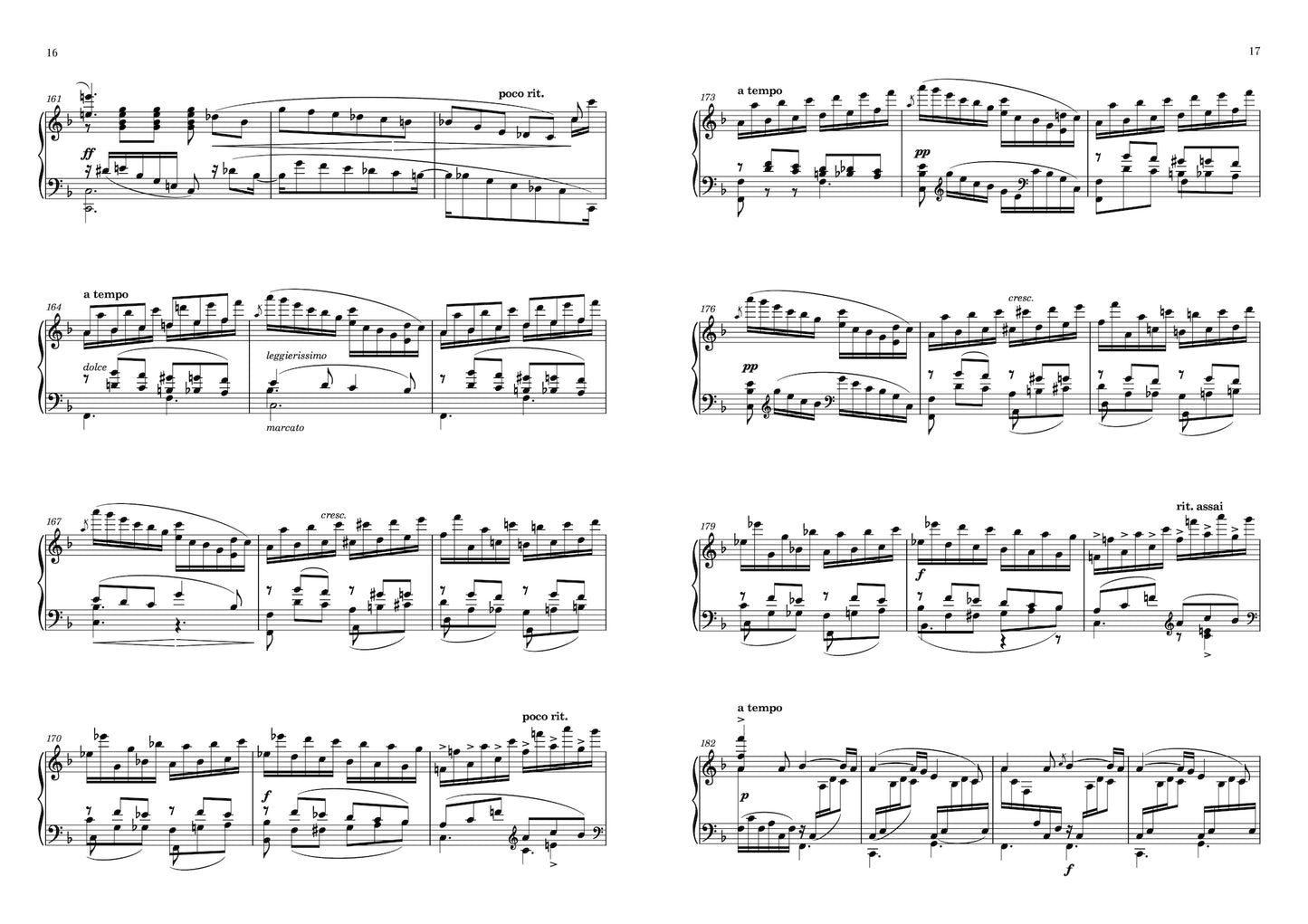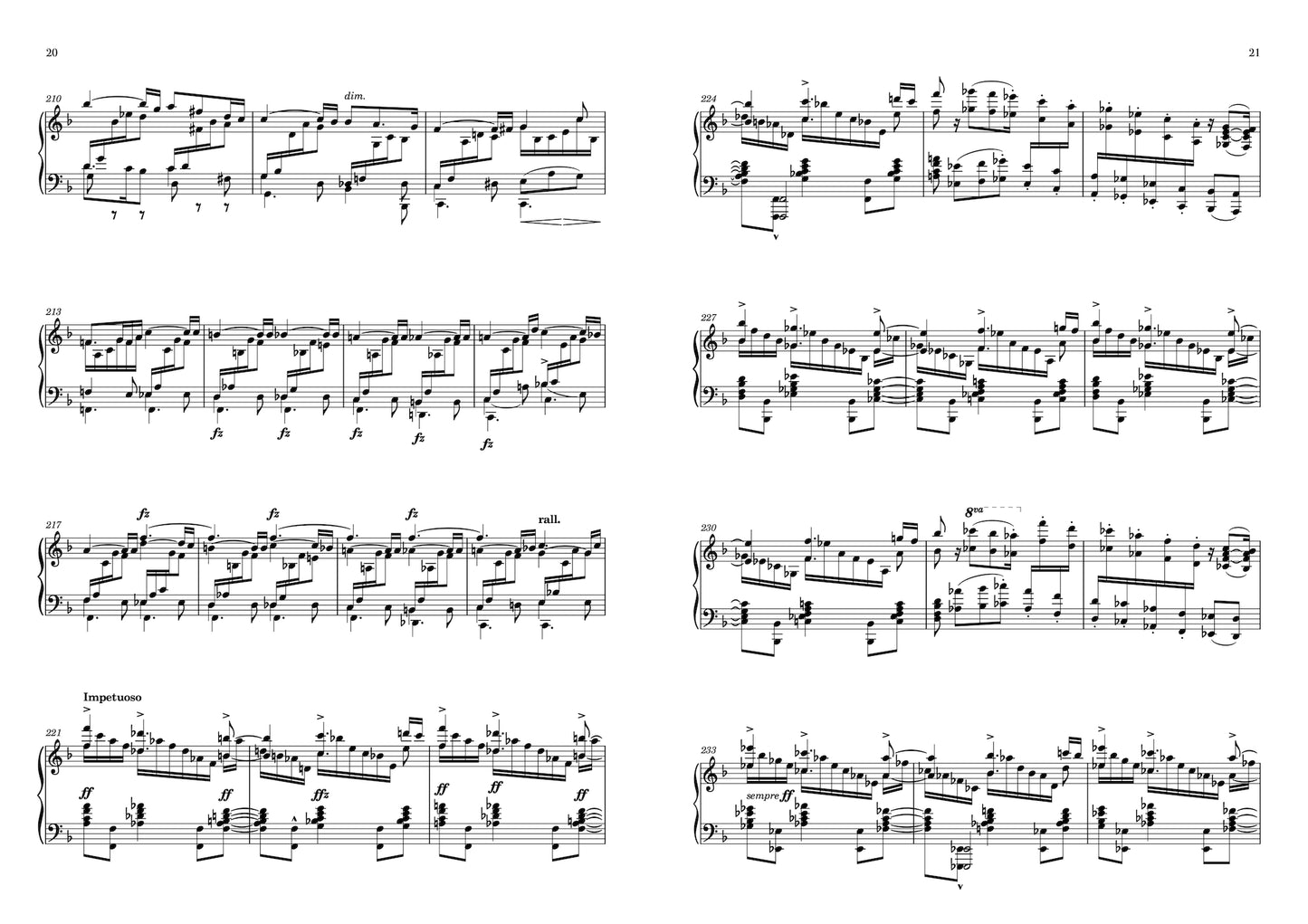Henselt, Adolf von (1814 – 1889)
Ballade
SKU:FE006
Free shipping on 3 items, or 2 if one is an album.
This is a physical product, printed on our premium, heavy duty cream paper and wirebound to lay perfectly flat. Looking for the downloadable version? Check out Henselt: Ballade (Download).
Couldn't load pickup availability
Description
Henselt’s Ballade in B minor (1854) is a monumental work of the Romantic piano literature, blending noble grandeur with emotional volatility. Cast in a freely evolving structure, the piece traverses a wide expressive range—from restrained introspection to sweeping climaxes—while maintaining a coherent narrative arc. The music is shaped by long-spun melodies, complex polyphony, and subtle chromatic shading, all characteristic of Henselt’s mature style.
Notably, the work features textures of striking density, including a central passage in which melody and accompaniment are so intricately interwoven that they suggest the illusion of three hands. While technically formidable, the demands always serve a lyrical or structural purpose, never descending into mere display. The Ballade stands as one of Henselt’s most fully realised compositions and a powerful statement of his compositional identity at the height of his career.
Quick Overview
- Composer: Adolf von Henselt (1814–1889)
- Edition: Urtext (FE006)
- Pages: 31 (28 + III) pages.
- Difficulty: Level 10 / 10
- Editor: Martijn Vromans
- Paper: A4, 120 gsm cream (Clairefontaine)
- Binding: Black steel wire binding
About the Composer
About the Composer
Adolf von Henselt (1814–1889) was a German pianist and composer who spent much of his career at the court of St Petersburg. His lyrical pianism and innovative technique left a lasting mark on the Russian piano school, influencing generations of pianists including Rubinstein, Scriabin, and Rachmaninoff. As a composer, he combined virtuosity with expressive depth—qualities that earned him high praise from contemporaries such as Schumann and Liszt. Felix Editions reintroduces his work with a critical eye on the original sources.
Contents
Contents
- Introduction
- Ballade, Op. 31
- Critical Commentary
Share







-
Premium Editions
Our paper editions are pleasing to the eye: gorgeous and heavy cream paper produced in an environmentally friendly manner. We print our albums ourselves and use pigmented ink instead of toner. Due to the ink soaking into the paper, a beautiful print is created. All our albums are bound with a steel binding spine, so the albums last a long time and stand perfectly flat on the piano.







